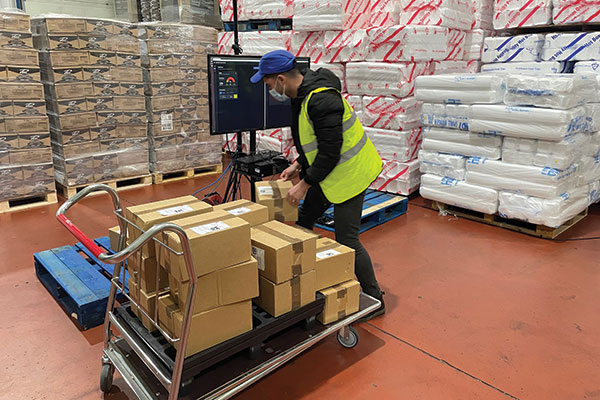By Gary Forger · June 12, 2021
There’s a TV ad about a family in the car on a camping trip. The mother checks her phone to see if they remembered to lock the front door. They didn’t, so she does so remotely. When they unpack at the camp site, the only thing missing is the tent. That’s a problem they can’t fix remotely.
The car with the missing tent isn’t a whole lot different than a pallet load without one or more items that should have been unitized on it. However, it’s easier to ship those missing boxes a day late than to drive home, get the tent and return to the camp site. But neither is the preferred method of operation.
Daniel Collins, director of IoT solutions at ADLINK, couldn’t agree more. His interest is in making sure every pallet load leaves the DC with everything that should be on it. And his company’s smart pallet solution is all about making sure that happens every time.
He sees the next big push in the warehouse and distribution center as centered on Internet of Things (IoT) technologies. By the way, the AD in the company name is about turning anything that is analog into something digital.
Which brings us to building those perfect pallet loads. Now that you’ve read the words “smart pallet,” you’re already sure there’s some tracking technology on the pallet. You would be wrong. In fact, the smart part happens during palletization.
The IoT connections start with the packing list for each pallet. As boxes come down the conveyor line, cameras identify each one, checking it against packing software. Rule-based analytics identify any incorrect boxes, forcing a correction step during palletization and well before shipment.
The objective is really to ensure each pallet leaves the facility with all the right boxes. Get it right up front, says Collins, and “you avoid the additional cost of correcting errors after the pallet arrives at its destination. And we all know those not so incidental costs are always costly to the shipper’s reputation.”
Collins adds that the ADLINK Edge Smart Pallet solution is especially effective with pallet loads with a high mix of items. One company already benefiting from the packaging system is Evans Distribution Systems, a Michigan-based third-party logistics provider.
Steve Ruch, vice president of warehousing, says “the goal is to enhance our current operations with a non-disruptive technology, and machine vision has great potential to transform our business. The packing line conveyor still works the same way, but we are now more than 99% accurate with this system in place.”
As Collins explains, it’s all about optimizing palletization for order accuracy without slowing down the process. And while the smart pallet might not have saved that family without the tent, it would have ensured the tent was shipped properly to a local retailer in the first place. That’s not a bad start.
这家伙很懒,还没有设置简介